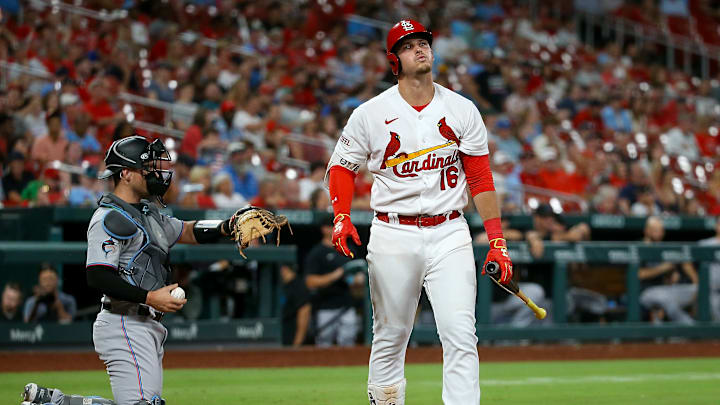Robot umpires could arrive at a big-league stadium near you as early as 2026, according to Rob Manfred, the commissioner of Major League Baseball. Manfred said MLB has the goal of testing robot umpires with the challenge system in Spring Training of 2025, wherein a human calls balls and strikes but a team can challenge those calls a certain number of times, in which case AI is brought in.
If the challenge system or, eventually, the fully automated ball-strike system is brought into the game, two specific St. Louis Cardinals players are likely to be significantly affected — one positively and one negatively.
A more accurate strike zone would place less emphasis on catchers' tactics behind the plate. No longer would catchers need to creep up perilously close to home plate and risk getting whacked by a bat, as Willson Contreras unfortunately fell victim to this season.
Also going by the wayside would be framing in an attempt to steal borderline strikes. Ivan Herrera would be a major beneficiary of the automated zone for this reason. Framing is currently considered a major responsibility for catchers, and Herrera is one run below average in that category. If he no longer has to be concerned with making balls look like strikes, Herrera can focus more on his hitting and his ability to throw out runners attempting to steal.
Herrera is currently rumored to be a potential trade chip for the Cardinals given the emergence of Pedro Pages behind the plate as Contreras' backup, but if the Cardinals choose to hold on to Herrera beyond 2025, the results could be worth the wait.
On the other side of the scenario is Nolan Gorman, who has been ensnared in a deep freeze at the plate. Gorman's major weakness is pitches up in the zone, and robot umpires are notorious for calling higher strikes than most human umpires. Because of this discrepancy, pitchers will likely attack Gorman with even higher pitches, knowing that they're more likely to be called strikes if Gorman lays off of them.
Gorman already holds an astronomical 37.5% strikeout rate, and that seems poised to climb into the stratosphere if higher pitches are called against him. The Cardinals might want to get out in front of the issue and attempt to trade Gorman, but other teams aren't stupid; they will be fully aware of his tendencies and the troubling future that may be awaiting him. But with JJ Wetherholt potentially the Cardinals' second baseman of the future, St. Louis could find itself in a Tyler O'Neill situation, where the team would take a minimal return to offload Gorman.
Performances in Spring Training are rarely indicative of how a player will do in the regular season, but if the challenge system is implemented in spring for 2025, it will be interesting to see how the Cardinals respond to it. Herrera and Gorman will be at the top of the list when it comes to analyzing how players are faring in spring.
